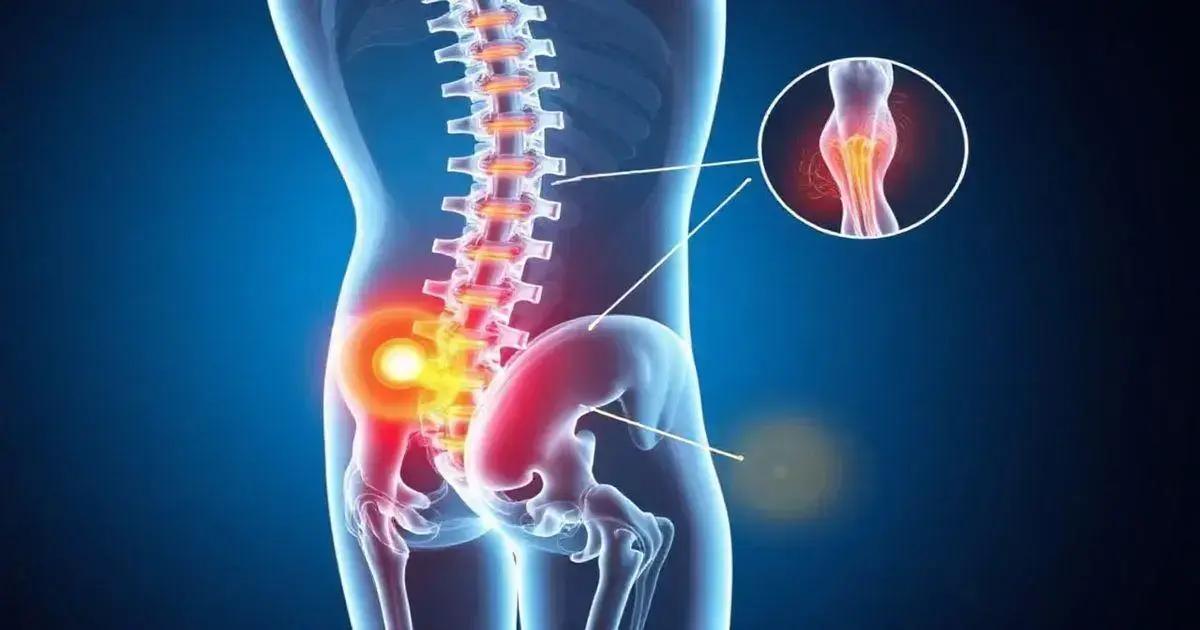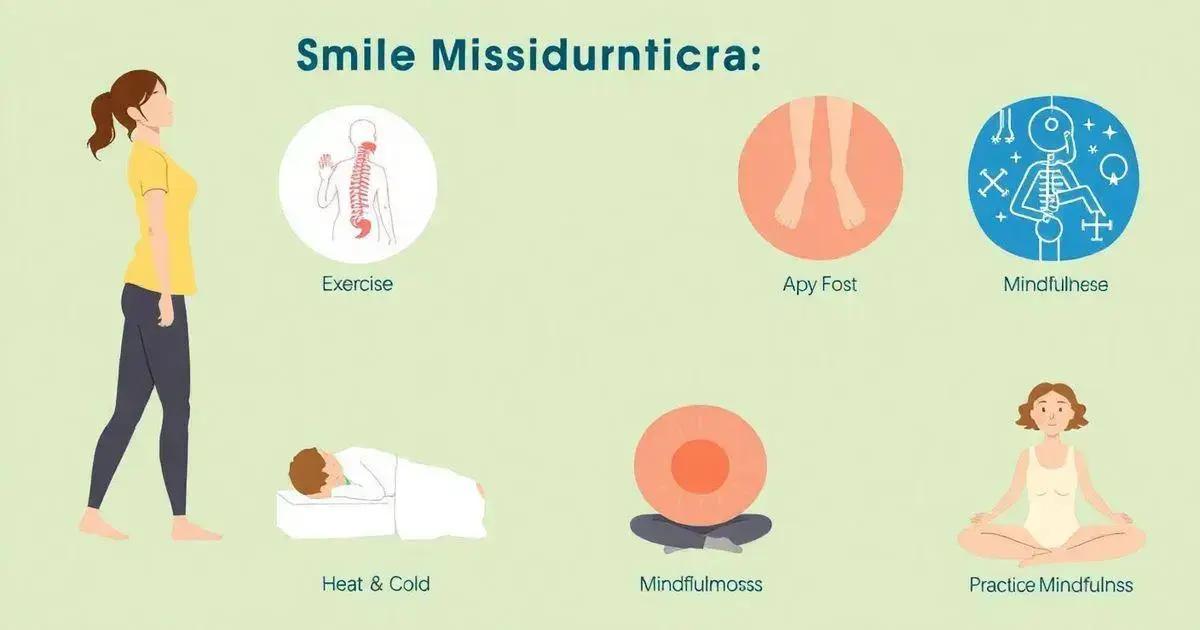Managing sciatica pain effectively involves making simple lifestyle adjustments, such as improving posture, maintaining a regular exercise routine, managing weight, and using heat or cold therapy. Implementing these strategies, along with a healthy diet and regular medical checkups, can lead to significant relief and better overall health.
Sciatica pain can significantly affect your daily life, but by making simple lifestyle adjustments, you can find relief. Many people suffer from this condition, which is often caused by a variety of factors, including poor posture, obesity, or prolonged sitting. In this article, we’ll explore how to manage sciatica pain effectively by incorporating lifestyle changes. You’ll learn about the importance of understanding your pain, the benefits of small adjustments, and practical tips to help you navigate daily activities with ease.
Understanding Sciatica Pain

Sciatica pain is a common condition that influences many individuals around the world. It occurs when the sciatic nerve, which runs from the lower back down to each leg, becomes irritated or compressed. This can lead to pain, numbness, and weakness in the affected leg.
Causes of Sciatica Pain
Various factors can contribute to sciatica pain. Herniated discs are one of the most common causes, as they can bulge out and press against the sciatic nerve. Other reasons include spinal stenosis, which narrows the space around the spinal cord, or spondylolisthesis, where a vertebra slips out of place. Additionally, injuries and conditions like piriformis syndrome can also lead to sciatica.
Symptoms of Sciatica
People experiencing sciatica may have different symptoms. Common signs include a sharp pain that radiates down the leg, a burning sensation, or tingling. Some may even experience weakness in the affected leg, making it difficult to move. These symptoms can vary in intensity, from mild discomfort to debilitating pain.
Who is at Risk?
Certain factors can increase the risk of developing sciatica pain. Age is a significant factor, as age-related changes, such as degenerative disc disease, can increase the likelihood of nerve compression. Obesity places additional stress on the spine, and sedentary lifestyles can lead to poor posture, contributing to the condition. Occupations that involve heavy lifting or prolonged sitting can also heighten the risk.
Understanding sciatica pain is the first step toward finding effective management and treatment options. By identifying the causes and symptoms, individuals can better navigate their path to relief and engage in lifestyle adjustments that can help improve their condition.
Benefits of Lifestyle Adjustments

Making lifestyle adjustments can significantly improve the management of sciatica pain. These changes can lead to better overall health and well-being by addressing the root causes of discomfort.
Improved Posture
One of the crucial benefits of lifestyle adjustments is the enhancement of posture. Maintaining a proper posture when sitting, standing, or walking can relieve pressure on the sciatic nerve, reducing pain and discomfort.
Weight Management
Another advantage is effective weight management. Carrying excess weight puts additional strain on the spine and can exacerbate sciatica symptoms. By adopting a balanced diet and regular exercise routine, individuals can achieve a healthier weight, potentially easing their pain.
Increased Flexibility
Implementing regular stretching exercises and flexibility training can improve the flexibility of your muscles and joints. This practice can help reduce tension around the sciatic nerve and enhance mobility, making everyday activities much easier and more enjoyable.
Stress Reduction
Lastly, lifestyle adjustments promote stress reduction. High levels of stress can manifest as tight muscles, which can aggravate sciatica pain. Engaging in relaxation techniques such as yoga, meditation, or deep breathing can help alleviate stress and contribute to overall pain management.
By embracing these lifestyle adjustments, individuals not only work towards reducing sciatica pain but also enhance their overall quality of life.
Practical Tips for Pain Management

Managing sciatica pain effectively involves several practical tips that can be easily integrated into your daily routine. These strategies focus on relieving discomfort and promoting mobility.
Regular Exercise
Engaging in regular exercise is vital. Low-impact activities such as walking, swimming, and cycling can strengthen the back muscles and support the spine. These exercises also help maintain flexibility and reduce stiffness.
Heat and Cold Therapy
Applying heat or cold therapy can provide immediate relief. Use an ice pack on the painful area for 15-20 minutes to reduce inflammation. Alternatively, heat packs or warm baths can help relax tense muscles, easing the discomfort.
Proper Ergonomics
Maintaining proper ergonomics at work and home can reduce strain on your back. Ensure your chair supports your lower back and that your computer screen is at eye level. Frequent breaks to stretch and walk around can also improve posture and lessen pain.
Mindfulness and Relaxation Techniques
Incorporating mindfulness and relaxation techniques into your routine can aid in pain management. Practices like deep breathing, meditation, or gentle yoga can help manage stress, which can worsen the perception of pain.
By applying these practical tips consistently, individuals can experience improved comfort and enhanced control over their sciatica pain.
Long-term Strategies for Relief

To achieve long-term relief from sciatica pain, incorporating effective strategies into your life is essential. These strategies help not just in managing pain but also in preventing future flare-ups.
Consistent Exercise Routine
Engaging in a consistent exercise routine is critical for long-term health. Activities that strengthen the core and back muscles can provide greater support for the spine. Consider incorporating exercises like pilates or swimming into your weekly schedule.
Healthy Diet
Maintaining a healthy diet plays a significant role in overall wellness. Focus on eating nutrient-rich foods that help reduce inflammation. Incorporate fruits, vegetables, whole grains, and lean proteins into your meals to promote healing and maintain a healthy weight.
Regular Medical Checkups
Scheduling regular medical checkups ensures that any changes in your condition are monitored. Working with healthcare professionals can provide personalized strategies and treatments to maintain pain relief and address any emerging issues.
Alternative Therapies
Exploring alternative therapies, such as acupuncture or chiropractic adjustments, can also be valuable. These methods may provide additional relief and complement your lifestyle adjustments, offering a holistic approach to managing sciatica pain.
By integrating these long-term strategies into your daily life, you can create a strong foundation for sustained relief and a healthier, more active lifestyle.
Effective Management of Sciatica Pain Through Lifestyle Adjustments
Incorporating simple lifestyle adjustments can make a significant difference in managing sciatica pain. By understanding the condition and its symptoms, you can take proactive steps toward relief.
Benefits like improved posture, weight management, and increased flexibility can empower individuals to regain control over their lives. Practical tips, such as adhering to a consistent exercise routine, using heat and cold therapy, and maintaining proper ergonomics, further enhance pain management efforts.
Long-term strategies, including a healthy diet, regular checkups, and exploring alternative therapies, provide a comprehensive approach to preventing future flare-ups. By committing to these adjustments, individuals can pave the way for lasting relief and an improved quality of life.
Ultimately, managing sciatica pain requires a holistic approach that combines understanding, practical strategies, and healthy lifestyle choices.
FAQ – Frequently Asked Questions About Managing Sciatica Pain
What lifestyle adjustments can help manage sciatica pain?
Lifestyle adjustments such as improved posture, regular exercise, weight management, and stress reduction techniques can help effectively manage sciatica pain.
How does exercise benefit those with sciatica?
Regular exercise strengthens the back and core muscles, improves flexibility, and promotes overall spine health, which can alleviate sciatica symptoms.
What types of exercises are recommended for sciatica pain?
Low-impact activities such as walking, swimming, and specific stretching exercises are highly recommended for individuals experiencing sciatica pain.
Are there effective home remedies for sciatica pain?
Applying heat or cold to the affected area, along with practices like yoga and gentle stretching, can provide relief at home.
How can diet influence sciatica pain?
A healthy diet rich in anti-inflammatory foods can help reduce pain and promote healing, while maintaining a healthy weight reduces strain on the spine.
What long-term strategies can I implement for sciatica relief?
Long-term strategies include maintaining a consistent exercise routine, regular medical checkups, pursuing alternative therapies, and focusing on a balanced diet.












